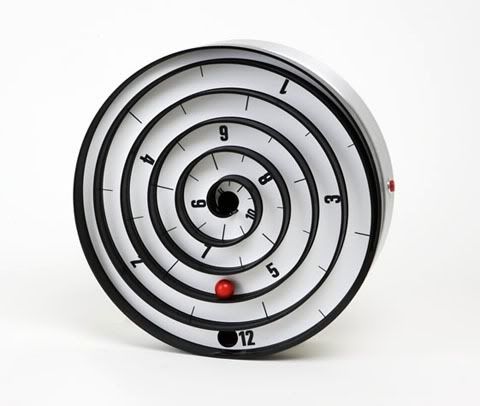Mint lays out the case against the gold-plated, gas-pressurized, terribly overpriced cables you'll find lining the shelves at electronics retailers. Monster is a main culprit of preying on those who haven't learned what Mint's very clever infographic illustrates: there is no difference that you can see with your eyes between at $6 HDMI cable and a $250 HDMI cable. Follow the link for their full take:
Wednesday, March 31, 2010
Why You Should Never Pay More Than $10 For HDMI Cables
FINALLY: The Difference between Nerd, Dork, and Geek Explained by a Venn Diagram
You’re welcome. This nerd/dork/geek/dweeb Venn diagram should save you a lot of time and frustration in the future."

Monday, March 29, 2010
Thursday, March 25, 2010
This Is the Future of the Fight Against Cancer - Nanobots - Gizmodo
 Look close. You may be staring at the end of cancer. Those tiny black dots are nanobots delivering a lethal blow to a cancerous cell, effectively killing it. The first trial on humans has been a success, with no side-effects:
Look close. You may be staring at the end of cancer. Those tiny black dots are nanobots delivering a lethal blow to a cancerous cell, effectively killing it. The first trial on humans has been a success, with no side-effects:
It sneaks in, evades the immune system, delivers the siRNA, and the disassembled components exit out.
Those are the words of Mark Davis, head of the research team that created the nanobot anti-cancer army at the California Institute of Technology. According to a study to be published in Nature, Davis' team has discovered a clean, safe way to deliver RNAi sequences to cancerous cells. RNAi (Ribonucleic acid interference) is a technique that attacks specific genes in malign cells, disabling functions inside and killing them.
i3D's glasses-free prototype screen aims to take on all of 3D's problem areas [video]
The coolest thing by far is the software's ability to convert 2D to 3D content on the fly. One second we were watching a two-dimensional clip of Cars and then with the tap of the 3D button the car was driving off the screen.
Tuesday, March 23, 2010
Tartan Ribbon - The first color photograph
Monday, March 22, 2010
A sweet problem: Princeton researchers find that high-fructose corn syrup prompts considerably more weight gain
MIT Student Invention Deployed in Haiti to Save Lives | Popular Science
PhD candidate Danielle Zurovcik has designed a $3 pump to drastically speed up the healing of countless patients in the aftermath of Haiti's recent earthquake.

Good Concept: Infinite USB plug is a big idea for small conveniences
In a classic case of "why didn't we think of this first," Chinese design student Gonglue Jiang has shown us a new way for overcoming the limitations imposed by the scarcity of USB ports onsome computers. Instead of forcing you to constantly hot swap devices into that one port, Gonglue's Infinite USB plugs keep all your cables connected, thereby facilitating those smartphone syncs, spy camera recharges, and -- for the ultimate irony -- maybe even a USB hub. If you're thinking this would be brought down by a bout of bandwidth starvation once you start some USB multitasking, you're probably right, but power shortages shouldn't be an issue as the author has also come up with an external power connector that joins into his Infinite chain of connectivity. If only this wasn't just a concept.
Friday, March 19, 2010
Windpipe transplant success in UK child
A 10-year-old British boy has become the first child to undergo a windpipe transplant with an organ crafted from his own stem cells.
It is hoped that using the boy's own tissue in the nine-hour operation at Great Ormond Street Hospital will cut the risk of rejection.
The world's first tissue-engineered windpipe transplant was done in Spain in 2008 but with a shorter graft.
Doctors say the boy is doing well and breathing normally.
He has a rare condition called Long Segment Congenital Tracheal Stenosis, in which patients are born with an extremely narrow airway.
(...)
In order to build him a new airway, doctors took a donor trachea, stripped it down to the collagen scaffolding, and then injected stem cells taken from his bone marrow.
The organ was then implanted in the boy and over the next month, doctors expect the stem cells to transform into specialised cells which form the inside and outside of the trachea.
Thursday, March 18, 2010
F-35B supersonic jet's first mid-air hover (video)
Octopuses excited by high definition television (HDTV)
In experiments evaluating how the creatures react to moving images, the animals responded far more vigorously to HDTV than standard definition TV.
It appears that standard definition moving images are not sufficiently "convincing" for the sophisticated cephalopods, say the scientists.
Researchers can now use HDTV as a tool to study elements of their behaviour, such as personality.
Thursday, March 11, 2010
Anti-albino (All-black) penguin discovered

King Penguins are notorious for their prim, tuxedoed appearance -- but a recently discovered all-black penguin seems unafraid to defy convention. In what has been described as a "one in a zillion kind of mutation," biologists say that the animal has lost control of its pigmentation, an occurrence that is extremely rare. Other than the penguin's monochromatic outfit, the animal appears to be perfectly healthy -- and then some. "Look at the size of those legs," said one scientist, "It's an absolute monster."
The under-dressed penguin was photographed by Andrew Evans of National Geographic on the island of South Georgia near Antarctica. As the picture circulated, some biologists were taken aback -- including Dr. Allan Baker of the University of Toronto.
While multicolored birds will often show some variation, Dr. Baker explains that what makes this all-black King Penguin so rare is that the bird's melanin deposits have occurred where they are typically not present -- enough so that no light feathers even checker the bird's normally white chest.
Andrew Evans:
Melanism is merely the dark pigmentation of skin, fur -- or in this case, feathers. The unique trait derives from increased melanin in the body. Genes may play a role, but so might other factors. While melanism is common in many different animal species (e.g., Washington D.C. is famous for its melanistic squirrels), the trait is extremely rare in penguins. All-black penguins are so rare there is practically no research on the subject -- biologists guess that perhaps one in every quarter million of penguins shows evidence of at least partial melanism, whereas the penguin we saw appears to be almost entirely (if not entirely) melanistic.
Tuesday, March 09, 2010
Junk Art (PHOTOS): 10 Amazing Artists Using Recycled Materials
Junk can be a beautiful thing, if you have the eyes to see it. From litter off the streets to odds and ends in the house, these artists from around the world find a use for what others would toss out without a second thought. We've compiled 10 artists who are creating intriguing works with recycled materials, redefining what we call trash -- we love this kind of reuse!

While he doesn't exclusively use recycled materials, among the supplies in Brazilian artist Vik Muniz's arsenal are dirt, dust, the circle remnants made by hole punches, and random junk. This self-portrait is made from magazines.
Monday, March 08, 2010
Obscura Cuelight Pool Table
Obscura Digital Cuelight Interactive Pool Table. Featured at the Esquire Houses Ultimate Bachelor Pad in NYC, the limited Edition Obscura CueLight projection system turns a game of pool into an amazing interactive art display. Obscuras projection, sensor and tracking system reveals images and animations that follow the movements of the pool balls as players hit them around the table. You supply the pool table and we supply the system and customized content designed to create any type of experience you can imagine from relaxing to rockin.
Tuesday, March 02, 2010
Scientists Have Discovered Booze That Won't Give You A Hangover
Doctors Kwang-il Kwon and Hye Gwang Jeong of Chungnam National University studied the properties of oxygenated alcohol - booze with oxygen bubbles added - which is a popular concoction in their country. In these drinks, oxygen is added the way carbonation is usually added to soda, and the scientists wanted to know if these oxygenated beverages affected people differently than non-oxygenated ones. The answer was a resounding yes.
So why does adding O2 to booze lessen the nasty after effects? When you drink ethanol, you body needs to oxidize it to water and carbon dioxide in order to process it. This occurs via hepatic oxidation, where the liver does its thing to counteract the liquor you've just poured down your gullet. The enzymes that process alcohol require oxygen to function, and it's thought that by storing the oxygen in the alcohol itself, the system functions more quickly and efficiently.
Hydrofloors' Swimming Pools Belong In the X-Men's Danger Room - Hydrofloors
 I don't know who has the pockets and the space to install Hydrofloors—mechanically operated tiles that sink into the ground slowly, revealing a swimming pool already full of water—but I want to meet them. Watch them in action:
I don't know who has the pockets and the space to install Hydrofloors—mechanically operated tiles that sink into the ground slowly, revealing a swimming pool already full of water—but I want to meet them. Watch them in action:
Skinput: Skin Touch Interfaces








